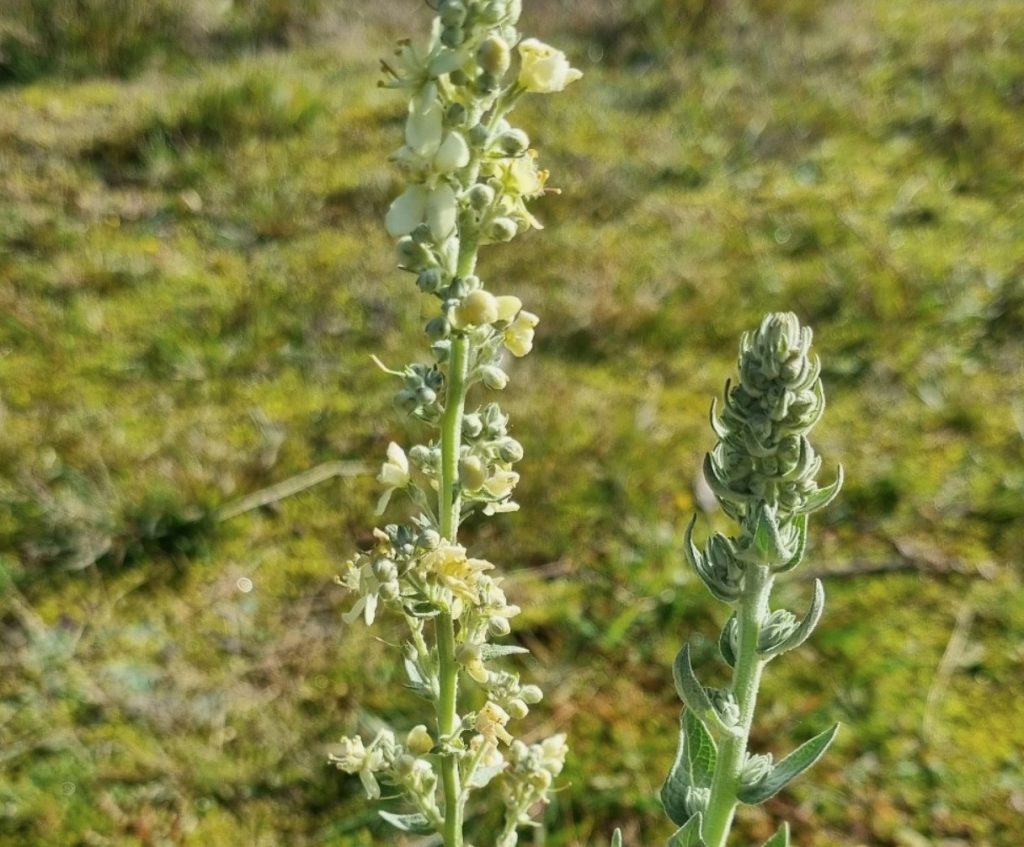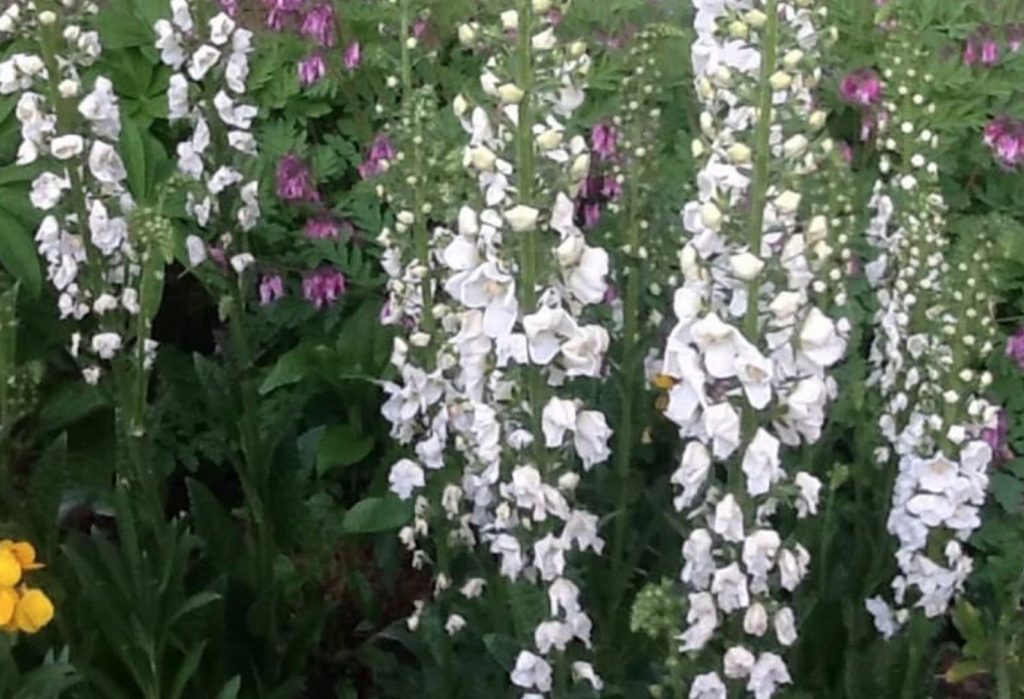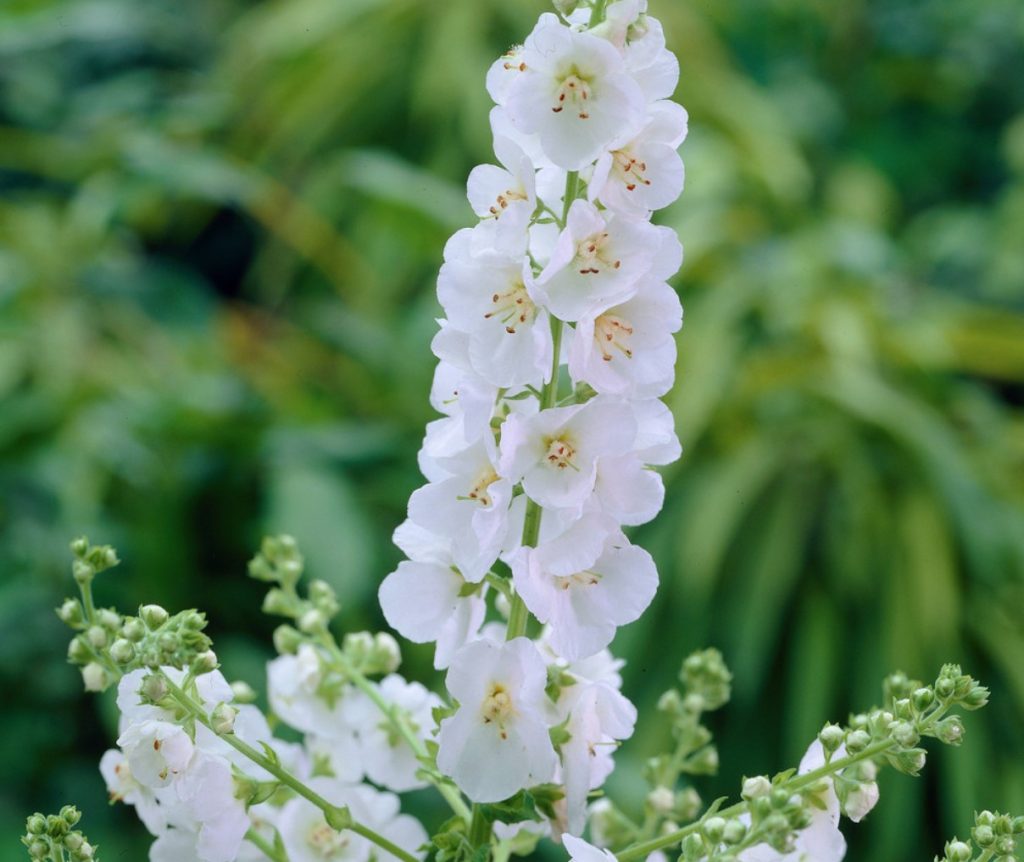
What is White Mullein?
White mullein (Verbascum thapsus) is a tall, biennial herbaceous plant native to Europe, North Africa, and western Asia. It’s a member of the Scrophulariaceae family and is characterized by its large, woolly leaves and tall, yellow flower spikes. This plant has been used for centuries for its medicinal properties and is a familiar sight in many meadows, fields, and roadsides.
How Does White Mullein Look?
White mullein is a striking plant with a distinctive appearance. In its first year of growth, it typically produces a rosette of large, woolly leaves. These leaves can be up to 2 feet (60 cm) long and are covered in a dense layer of fine hairs, giving them a silvery-gray color. In its second year, the plant sends up a tall, erect stem that can reach heights of 6-10 feet (1.8-3 meters). This stem is also covered in woolly hairs and is topped with a long spike of small, yellow flowers. These flowers are arranged in whorls around the stem and are often visited by bees, butterflies, and other pollinators.
What is Known About White Mullein?
White mullein has a long history of use as a medicinal plant. Its leaves and flowers contain a variety of bioactive compounds, including flavonoids, saponins, and mucilage. These compounds have been shown to have anti-inflammatory, expectorant, and diuretic properties. In traditional medicine, white mullein has been used to treat a variety of ailments, including coughs, colds, asthma, and skin conditions.

How to Grow White Mullein
Growing white mullein is relatively easy and can be done in most gardens. Here are some tips for cultivating this plant:
- Sunlight: White mullein thrives in full sun. It needs at least 6-8 hours of direct sunlight per day to produce healthy growth and abundant blooms.
- Soil: Well-draining soil is essential for the proper development of this plant. A mix of loam and sand is ideal.
- Watering: White mullein is drought-tolerant once established. However, it requires regular watering during dry periods, especially when it’s young.
- Propagation: This plant can be propagated from seeds. Seeds should be sown directly in the garden in the spring.
Additional Information About White Mullein
- Pollinators: The yellow flowers of white mullein attract bees, butterflies, and other pollinators. This makes it a valuable addition to any garden that aims to support biodiversity.
- Wildlife: The plant’s woolly leaves and tall stems can provide shelter for small animals, such as birds and insects.
- Medicinal Uses: As mentioned earlier, white mullein has a long history of use as a medicinal plant. It can be used to make herbal teas, tinctures, and salves.
- Culinary Uses: While not commonly used in cooking, the leaves of white mullein can be added to salads or used to make herbal teas.

Conclusion
White mullein is a versatile and beneficial plant that offers beauty, ecological benefits, and potential medicinal uses. Its tall stature, striking flowers, and adaptability make it a popular choice for gardens and natural areas. Whether you’re interested in attracting pollinators, supporting wildlife, or exploring its traditional medicinal applications, white mullein is a plant worth considering.
FAQs
- Can white mullein be grown in containers? Yes, white mullein can be grown in containers. However, it will require larger pots to accommodate its deep roots.
- How long does it take for white mullein to bloom? White mullein typically blooms in its second year of growth.
- Is white mullein deer-resistant? Yes, white mullein is generally deer-resistant.
- Can white mullein be invasive? In some regions, white mullein can become invasive. It’s important to be mindful of this and monitor its growth.
- Are there any pests or diseases that affect white mullein? White mullein is relatively pest and disease-resistant. However, it can be susceptible to powdery mildew in humid conditions.
